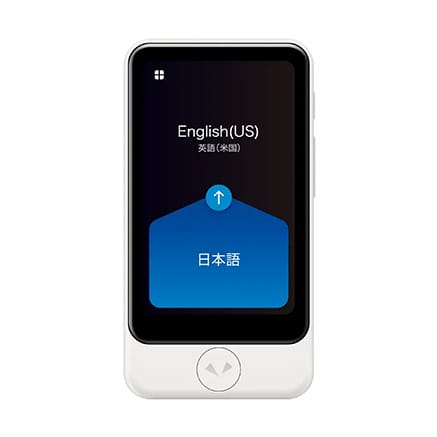In the intricate tapestry of global healthcare, clear, and precise communication is not just essential, it’s imperative. With diverse languages, dialects, and cultural nuances, the risk of miscommunication in the medical field can potentially lead to detrimental outcomes.
Addressing this pivotal need is the Pocketalk device: an advanced multi-sensory, two-way translator that promises to act as a universal linguistic bridge.
Here’s an exhaustive examination of its features and implications, particularly tailored for the discerning healthcare community:
Pros
- State-of-the-Art Technology: Pocketalk stands apart with its commitment to accuracy. By harnessing leading translation engines from across the globe, it delivers an unmatched translation experience, adeptly capturing localized dialects and even slang — invaluable in patient interviews and interdisciplinary interactions.
- Broad Language Palette: The device’s linguistic prowess is hard to rival. It translates a staggering 82 languages — facilitating 61 voice bilaterally, 21 voice-to-text bilaterally, and accommodating up to 37 niche languages voice-to-text unilaterally. This spectrum ensures that almost no linguistic barrier remains unconquered.
- Visual Translation Mastery: Propelled by the proprietary Sourcenext technology, Pocketalk’s camera offers more than mere visual recognition. It translates text, written content, and signs by overlaying the translated text on the original image. This is supplemented by an audio readout in the chosen language, ensuring multiple layers of comprehension.
- Designed for Natural Conversations: Gone are the days of robotic, statement-driven translations. Pocketalk embraces the fluidity of human conversation. Users can express themselves in full, natural sentences, with the device seamlessly translating up to 30 continuous seconds of dialogue.
- User-Centric Features: The device, with its 40% larger touchscreen, offers an intuitive user experience. This, combined with its top-tier noise-cancelling microphones, ensures clarity of communication, even in challenging environments like busy hospital wards or crowded seminar halls.
- Added Functionalities: Beyond its primary translation function, Pocketalk doubles as a handy tool for international professionals, offering conversions for currency, measurements, and temperatures.
- Extensive Connectivity: Its 2-year complimentary cellular data plan, spanning coverage in over 130 countries, underscores its position as a tool designed for global outreach.

Cons
- Adaptation Phase: While Pocketalk is intuitively designed, new users, especially those less accustomed to tech interfaces, might experience a brief adaptation phase to fully harness its capabilities.
- Investment Concern: Given its suite of advanced features, the device’s cost might be a point of contemplation, especially for smaller healthcare establishments or budget-conscious professionals.
Final Reflections
Pocketalk is not merely a translator; it’s a groundbreaking innovation in bridging global healthcare communication. With its comprehensive suite of features, it fosters connections that were previously hindered by linguistic barriers. It epitomizes the adage that effective communication is at the heart of optimal care.
For healthcare professionals and institutions striving for excellence and seeking to expand their global footprint, Pocketalk is more than a worthy investment; it’s a necessity. In a domain where every word can impact a life, Pocketalk ensures that language is no longer a hurdle but a tool for enhanced understanding.
For more information, visit https://www.pocketalk.com/.
Daniel Casciato is a seasoned healthcare writer, publisher, and product reviewer with two decades of experience. He founded Healthcare Business Today to deliver timely insights on healthcare trends, technology, and innovation. His bylines have appeared in outlets such as Cleveland Clinic’s Health Essentials, MedEsthetics Magazine, EMS World, Pittsburgh Business Times, Post-Gazette, Providence Journal, Western PA Healthcare News, and he has written for clients like the American Heart Association, Google Earth, and Southwest Airlines. Through Healthcare Business Today, Daniel continues to inform and inspire professionals across the healthcare landscape.








